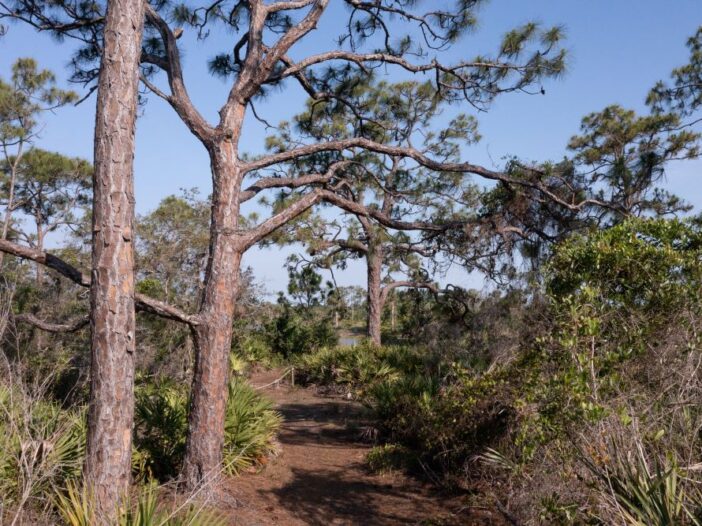
A few species of plants once easy to spot appear to be missing — or at least not as readily visible as they once were.
Hurricane Ian struck Southwest Florida one year ago, on September 28, 2022, submerging the Garden’s natural areas. The inundation buffered the cultivated gardens from extensive damage but may have impacted some native plant populations.
That’s the assessment of George Wilder, a botanist and curator of the Herbarium of Southwestern Florida, located at the Garden. Wilder recently chronicled the plants found within Garden’s natural habitats and undeveloped but “disturbed” lands such as firebreaks and drainage canals. He documented 576 species. He has not done a scientific study since the hurricane but noted five species he has not spotted over the past year.

“I’m quite worried about them,” he says.
The most apparent absence is that of Jameson’s waterlily (Nymphaea jamesoniana), a state-endangered plant. Wilder used to see them in a ditch along Thomasson Drive, bordering our property.
“They were choking that ditch in previous years,” he says. “I haven’t seen one plant out there.”
The abnormally dry summer may have contributed to the void, he adds.
Other absences:
- Hairy fimbry (Fimbristylis puberula), a sedge that Wilder previously observed in the Garden’s northern scrub habitat. (Scrub is an increasingly rare ecosystem, characterized by higher elevation and sandy soil. Most has been lost to development.)
- Pinebarren goldenrod (Solidago fistulosa), a flowering plant whose regional population has been declining due to habitat loss.
- Forked bluecurls (Trichostema dichotomum), a mint that grew in the scrub habitat.
- Florida yelloweyed grass (Xyris floridana), a grass species uncommon in south Florida. Wilder had been “delighted” to find it in the Garden’s pine flatwoods and is concerned he has not seen it since the storm.
Additionally, bromeliads exposed to floodwater seem to have perished, Wilder says. Some more common species, however, rebounded. Examples include least snoutbean (Rhynchosia minima), which sprouted a new population, and fragrant flatsedge (Cyperus odoratus), which tolerated the storm “beautifully.”
When natural disasters strike, some species may not be able to rebound because they can’t reseed, Wilder explains.
“Many years ago, this area was surrounded by scrub land,” he says. “There were seed sources for lost species. Now they are less likely to be replaced naturally.”

That reality drives Garden conservationists to collect seeds from as many native species as possible and investigate how to grow them (there is little published research on Southwest Florida’s native plants). Staff members comb the Preserve and nearby conservation lands to add to the seed bank’s holdings, currently about 220,000 seeds, including those from 48 native species. Conservation Horticulture Manager Jessica DeYoung says the team aspires to conserve some 200 native species.

“We can’t predict the future,” she says. “We don’t know what plants will be affected when. Having that repository, the seed bank, allows us to collect these seeds before something happens to the plant in the wild.”

About the Author
Jennifer Reed is the Garden’s Editorial Director and a longtime Southwest Florida journalist.

